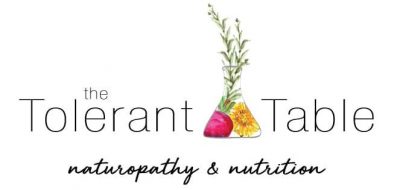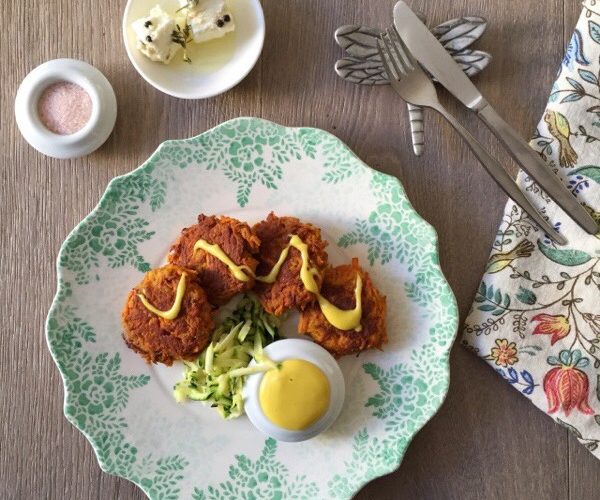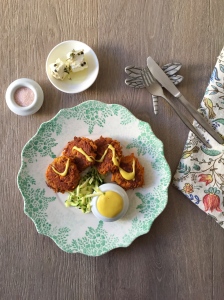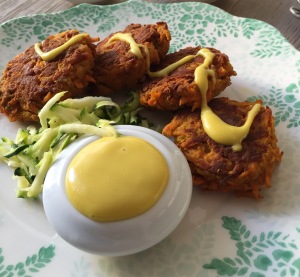I really enjoy making savoury fritters; I find it an easy way to cram lots of vegetables and spices into one tasty little package. They’re extremely portable making them perfect Uni snacks or lunches for me, and there are so many flavour combinations that can be dreamt up too!
An abundance of herbs and spices are staples in all of my meals but I tend towards many of the healing Ayurvedic spices, with turmeric being a particular favourite. It is something you will see in a lot of my savoury recipes because I love it! I love the vibrant colour, the smell, the taste but most of all I love that it is well-known for it’s antioxidant and anti-inflammatory properties thanks to a substance it contains called curcumin (1). It’s definitely a great addition to the diet for those of us with inflammatory conditions like arthritis (Ankylosing spondylitis in my case), but it can also be a useful antiviral and antibacterial agent amongst many other things (2).
It is now known that the curcumin in turmeric is more readily absorbed when combined with piperine, which is found in black pepper (3) and a fat, so be sure to use them all together in any of your spiced up, nutritious creations.
Aren’t our foods amazing? We can use them wisely or abuse them and having done both at some point in my life I can say with confidence I’m very happy to have moved into the realms of using them wisely!
Ayurvedic Spiced Carrot Fritters with Mayonnaise
Serves 1 – 2, makes 4 or 5 fritters depending on size
Ingredients for the fritters
- 1 large carrot, grated*
- 1 egg
- 2 Tbsp coconut flour
- 1 Tbsp fresh parsley, chopped
- 1 tsp turmeric
- ½ tsp cumin
- ½ tsp ground coriander
- Salt and pepper to taste (I’m always generous with these)
Ingredients for the low histamine mayonnaise
- 1 egg yolk
- ¼ tsp Dijon mustard (can do without this but it just gives a nice little extra zing)
- Pinch of salt
- 40ml extra virgin olive oil
Directions for the mayonnaise
- Whisk the yolk, salt and mustard together in a small bowl until combined
- Slowly drizzle in the olive oil, about one teaspoon at a time and keep whisking. Only add the next teaspoon of oil when you see the previous one has been well combined. If you add it too quickly it will split! Continue this until all the oil has been whisked in and you have a nice creamy (and bright yellow!) mayonnaise.
Make this before the fritters so it’s ready to drizzle over them once they’re cooked.
Directions for the fritters
- Combine all ingredients in a bowl and mix well with your hands squeezing the mixture together so the flour absorbs all the moisture
- Take small portions of the mix and form into 4 – 5 fritters. Start by squeezing them into really tight balls then flatten them slightly
- Heat a frying pan over medium heat and add enough coconut oil for pan-frying (at least a couple of tablespoons)
- Add the fritters and press down a little more with your tool of choice (I used an egg flip). Don’t worry if they crumble a little, they should still retain their shape when flipped
- Fry for 2-3 minutes each side until cooked through then serve drizzled with mayonnaise.
Preparation time: 5 minutes
Cooking time: 10 minutes
* I have grated the carrot for this recipe in two different ways. Firstly, I did it in the Thermomix, which produced an extremely fine (pretty much pulverised) grate. I’ve also done it by hand, which produces a very coarse grate. Both lots of fritters worked perfectly but I prefer the finer grate personally. You decide what works for you.
Resources
1. Craig, W 1999, ‘Health-promoting properties of common herbs’, American Journal of Clinical Nutrition, vol. 70, no. 3, pp. 491s–499s
2. Aggarwal, B, Sundaram, C, Malani, N & Ichikawa, H 2007, ‘Curcumin: the Indian solid gold’, Advances in Experimental Medicine and Biology, vol. 595, pp. 1–75
3. Alamdari, N, O’Neal, P & Hasselgren, P 2009, ‘Curcumin and muscle wasting – A new role for an old drug?’, Nutrition, vol. 25, pp.125-129



